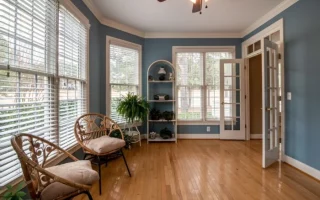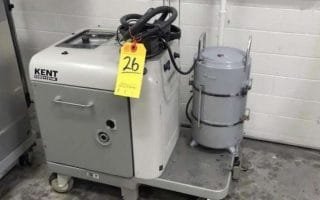Regarding home renovation, flooring choices are crucial to your living space’s aesthetics and functionality. Among the myriad options available, PLV flooring, or Polyvinyl flooring, stands out as a popular choice for homeowners seeking a blend of style and durability.
PLV flooring is a type of synthetic flooring made from polyvinyl chloride (PVC), known for its resilience and versatility. It is often chosen for its ability to mimic the appearance of natural materials like wood and stone while offering superior durability and ease of maintenance.
In this article, we will explore the benefits of PLV flooring and highlight why it is a stylish and durable choice for your home. From its composition and manufacturing process to its key advantages and installation methods, we’ll cover everything you need to know to make an informed decision.
| Feature | Luxury Vinyl Tile (LVT) | Luxury Vinyl Plank (LVP) | Waterproof Core (WPC) | Solid Polymer Core (SPC) |
|---|---|---|---|---|
| Shape | Typically square | Plank shape, mimicking wood | Plank or tile shapes | Plank or tile shapes |
| Design Versatility | High, can replicate wood, stone, or ceramic | High, focuses on wood aesthetics | High, often includes natural textures | High, durable designs with realistic finishes |
| Thickness Range | Generally 2mm to 8mm | Generally 2mm to 8mm | Typically thicker for added durability | Typically thicker for added durability |
| Wear Layer Thickness | Ranges from 6 mils to 30 mils or more | Ranges from 6 mils to 30 mils or more | Usually thicker for enhanced protection | Usually thicker for enhanced protection |
| Water Resistance | Water-resistant but not fully waterproof | Water-resistant but not fully waterproof | Fully waterproof | Fully waterproof |
| Installation Type | Glue-down or floating options available | Click-lock or glue-down | Floating installation preferred | Floating installation preferred |
| Ideal Use Cases | Residential and commercial spaces | Residential areas needing a wood-like finish | High moisture areas like bathrooms and kitchens | High-traffic commercial areas |
Understanding PLV Flooring
Composition and Types
PLV flooring is primarily composed of polyvinyl chloride (PVC), a type of plastic known for its durability and flexibility. This material is layered to create a robust flooring option that can withstand heavy foot traffic and resist wear and tear. One popular variant of PLV flooring is Luxury Vinyl Tiles (LVT), designed to replicate the look of natural materials like hardwood and stone.
Manufacturing Process
The manufacturing process of PLV flooring involves several steps to ensure its quality and durability. It begins with creating a PVC base layer, which provides the flooring’s structural integrity. This is followed by adding a printed design layer, giving the flooring aesthetic appeal. Finally, a protective wear layer is applied to enhance the flooring’s resistance to scratches, stains, and moisture.
Comparison with Other Flooring Options
Compared to other flooring options like hardwood, laminate, and carpet, PLV flooring offers several advantages. Unlike hardwood, which can be prone to scratches and water damage, PLV flooring is highly resistant to these issues. It also provides a softer underfoot feel compared to laminate, and unlike carpet, it does not trap dust and allergens, making it a healthier choice for your home.
Critical Benefits of PLV Flooring
Durability
One of the standout features of PLV flooring is its durability. It is designed to withstand the rigors of daily life, making it an ideal choice for high-traffic areas in your home. The protective wear layer ensures the flooring remains free from scratches, dents, and stains, maintaining its appearance over time.
Waterproof Features
PLV flooring is also known for its waterproof properties, making it a perfect choice for moisture-prone areas like kitchens, bathrooms, and basements. This feature protects the flooring from water damage and makes it easy to clean and maintain.
Aesthetic Versatility
With a wide range of designs, colors, and textures, PLV flooring offers aesthetic versatility that can complement any home decor. Whether you prefer the look of natural wood or the elegance of stone, PLV flooring can convincingly mimic these materials, allowing you to achieve the desired look without the associated maintenance challenges.
Comfort and Sound Absorption
In addition to its aesthetic and practical benefits, PLV flooring provides a comfortable underfoot feel. Its cushioning effect reduces fatigue, making it an excellent choice for areas where you spend a lot of time standing. Moreover, PLV flooring has sound absorption properties, which help reduce noise levels in your home, creating a more peaceful environment.
Installation Process
Preparation Steps
Before installing PLV flooring, it’s essential to ensure the subfloor is clean, dry, and level. Proper preparation will help prevent issues like uneven surfaces or gaps between tiles.
Installation Methods
There are two main methods for installing PLV flooring: click-lock and glue-down. The click-lock method involves snapping the tiles together, making it a popular choice for DIY enthusiasts. On the other hand, the glue-down method consists of adhering the tiles to the subfloor, providing a more permanent solution.
DIY vs. Professional Installation
While DIY installation can save money, professional installation ensures the flooring is laid correctly and efficiently. Consider the pros and cons of each method to determine which is best for your project.
Maintenance and Care
Cleaning Tips
To keep your PLV flooring looking its best, use gentle cleaning products and avoid harsh chemicals that can damage the surface. Regular sweeping and occasional mopping with a damp cloth is sufficient to maintain its appearance.
Long-term Care
For long-term care, avoid dragging heavy furniture across the floor, and use protective pads under furniture legs to prevent scratches. Regularly check for any signs of wear and address them promptly to extend the life of your flooring.
Common Mistakes to Avoid
Avoid using abrasive cleaning tools or wax-based products, as these can damage the protective layer of your PLV flooring. Always follow the manufacturer’s care instructions to ensure optimal performance.
Cost Considerations
Initial Investment vs. Long-term Value
While the initial cost of PLV flooring may be higher than other options, its long-term value is significant. Its durability and low maintenance requirements can save you money on repairs and replacements.
Cost Comparison with Other Flooring Types
Compared to hardwood or stone, PLV flooring is generally more affordable, offering a cost-effective solution without compromising style or quality.
Environmental Impact
Sustainability of PLV Flooring
Many PLV flooring options are now designed with sustainability in mind, using recycled materials and eco-friendly manufacturing processes. This makes them a more environmentally conscious choice for homeowners.
Recyclability and Waste Reduction
PLV flooring can also contribute to waste reduction efforts, as it is often recyclable at the end of its life cycle. This helps minimize its environmental footprint and supports sustainable building practices.
Conclusion
In conclusion, PLV flooring offers a compelling combination of style, durability, and versatility, making it an excellent choice for any home renovation project. Its ability to mimic natural materials and its practical benefits make it a standout option in the flooring market. If you’re considering a flooring upgrade, PLV flooring is worth exploring.
FAQs Section
- What are the installation challenges of PLV flooring? With the proper preparation, installation can be straightforward, but uneven subfloors can pose challenges.
- Is there a warranty for PLV flooring? Most manufacturers offer warranties, but terms vary, so checking the specifics before purchasing is essential.







